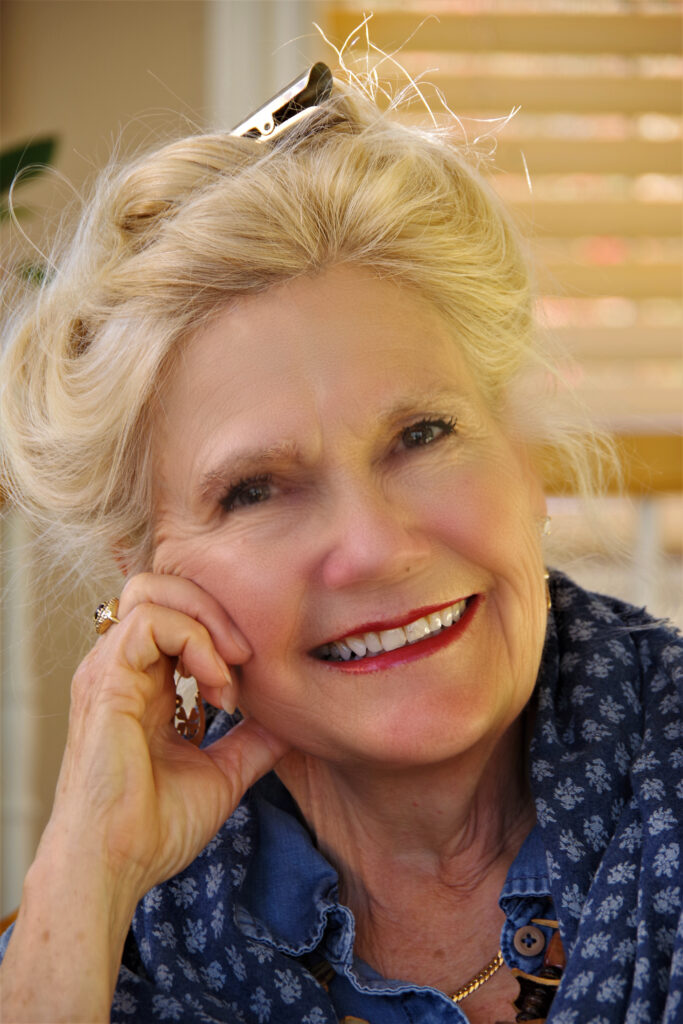This article about working in a male-dominated industry in Canada is part of Street Meet, FLEETSTREET’s series, where we meet up with trailblazers and thought leaders to deliver unique insight and inspiration into issues we all care about. And we are thrilled to offer this excerpt from Highway to the Sky: An Aviator’s Journey, by Lola Reid Allin.
It was August 1982. My contact at the airline advised a decision would be made after Labour Day. The interview went well. I turned up the volume on my phone, and checked every 10 minutes to be sure I hadn’t missed the call and to see if a voice message was left.
Yet, when the phone finally shrilled, I lurched with anxiety. What if it isn’t my possible-future-boss? What if I answer and he calls while I’m talking to someone else? What if he interprets the busy signal to mean I spend my day talking on the phone?
The phone rang. I lowered the volume of Asia’s Heat of the Moment on my stereo then, with a trembling hand but steady voice, answered the phone. My confidence was rewarded with, “Congratulations – we’d like you to start October first.”
I couldn’t be happier: being a pilot had been my “forever dream,” and I earned it. I studied and trained for years and passed all the exams and practical tests. The hard part was over, and I couldn’t wait to get out there and soar.
Of course, I knew I was entering a male-dominated field. Stats indicated few females chose my profession, and I hadn’t benefitted from a female mentor. During training, I was outnumbered 10 to two at the beginning, and 10 to one at graduation. Yet, despite this disparity, the guys were supportive.
Then I met my colleagues.
In contrast, the atmosphere on the job ranged from indifferent to hostile. I remember one colleague glaring into my eyes and saying, “My buddy interviewed for the job they gave to you.” While passing the lunchroom, I was devastated to overhear, “Wonder what she did to get the job?” followed by sniggers.
If this scenario in your male-dominated field doesn’t play out for you, consider yourself fortunate. But if it does, here are my five tips to survive and thrive.
1. Be confident
Despite having adequate training, many qualified women feel unqualified to apply for positions, or if “miraculously” hired, they continue to doubt their right to be hired. The constant scrutiny I experienced from one senior captain coupled with indifference or hostility from 50 per cent of my male colleagues made me second guess my expertise. My reluctance to be assertive reinforced nascent feelings of inadequacy.
When I flew with the captain who scrutinized me with an eagle eye and commented on minor details, I became anxious and tended to overthink my actions. This impacted my on-the-job performance which, in turn, reinforced the stereotypes/gender bias and fed into his a priori perceptions, subliminally or consciously, that he was right all along to believe that women can’t perform a “man’s job.”
Quelching that voice of uncertainty – “What made you think you could do this job? – may take determination and continued perseverance. Getting ahead requires constant reminders to oneself that the doubt is unfounded. But if you don’t change the tune, you might start believing this nonsense. Don’t let limiting beliefs or the opinions of others keep you from being the best you can be.
Remember: Walk tall and be proud of your accomplishments.
5+ studies about mental health that’ll make you think differently about self-care.
2. Believe in yourself
If you studied the same texts and trained for the same rigorous tests as your male colleagues, and successfully passed, you have as much right to your job as any man. However, you must recognize your presence is an anomaly that may subject you to harassment and discrimination, if only in the form of microaggressions.
What I didn’t realize was that microaggressions accumulate like individual snowflakes in a smothering snowstorm. Or that microaggressions can appear to be positive, such as men “just trying to help” as I loaded baggage at remote northern Canadian locations where pilots also loaded baggage and cargo. Those men were nice people, but their actions and words said they didn’t think I was capable of doing my job.
Be aware that legislated injustices were created by men who believed women incapable of much more than diapers and dishes and reflect the inherent bias and opinions of men who comprised all legislative positions at that time, though they represented fewer than half the population.
In Canada, the suffragette’s struggle for women’s equality to be recognized as persons did not end in 1918. In Quebec, women weren’t allowed to vote in provincial elections until 1940. First Nations women were excluded from the federal vote until 1960. In America, the 19th Amendment gave women the right to vote in 1920 and, in the United Kingdom, women aged 21 or older were given the right to vote in 1928.
In 1979, I left my husband. I needed to re-enter our matrimonial home to retrieve the car keys he’d stolen from me. Police officers refused to help, stating “the matrimonial home is the man’s castle,” despite my assurance we owned the home jointly.
Remember: Don’t listen to the doubters. If you are qualified, you can succeed.
Sarah Stockdale on creating inclusivity in growth marketing.
3. Strive for perfection
When you make an error, accept that you are not perfect, but also know that some colleagues – male and female – will translate your inability to be perfect as proof that you – and all women – are unsuited for your chosen career.
This isn’t a new phenomenon. In 1929, 20 women – including Amelia Earhart –participated in the first Women’s Air Derby, a 2,800 mile, nine-day race from Santa Monica, California to Cleveland, Ohio. And 15 of the original 20 successfully finished the race, but after Marvel Crosson died when her plane crashed on day two, newspapers were quick to print that “women have conclusively proven they cannot fly.”
Investigations subsequently determined that Marvel Crosson lost control of her airplane due to carbon monoxide leaking from the engine cowling.
Despite the success of the other female pilots in the race and the thousands of female pilots who followed, this idea that women are inherently incapable endures and is prevalent in STEM careers (science, technology, engineering and mathematics), particularly with engineering and aviation.
Remember: Nobody is perfect. Continue to improve and self-correct.
4. Be authentic
Not once did I think I wanted to be a “female pilot.” I wanted to be a “pilot.” While I accepted, without question, that pants and jacket were more appropriate than a skirt for most aspects of flying, I refused to wear a tie. Men wear ties and I never wanted to be a man. I wanted to be a pilot. But I agreed to wear a loosely knotted scarf, like a cravat.
Ironically, it wouldn’t have mattered if I had chosen to wear a tie. Not infrequently, although I wore a suit coat with aviator stripes on the sleeves identical to that of my male colleagues, people would ask, “Did you borrow the jacket?” or “Nice of you to keep the seat warm for the real pilot,” or “What are you serving for lunch?”
Some female pilots (including this writer) admit they tried to be accepted into the “old boy’s club” by emulating behaviours of larger group at least once by swearing, smoking cigars, hanging out in bars, and feigning interest in the traditionally male sports of baseball and football. Most concluded these behaviours were foreign and uncomfortable, and the attempts were largely unsuccessful, just as anyone pretending to be something they are not will be recognized as disingenuous.
If you are fortunate to have female colleagues, be aware not all will be interested in your friendship, just because you are female.
Remember: What you have in common with your colleagues, whether you are the only female or one of a few, is your chosen occupation. Build on that shared interest to develop camaraderie.
Amanda Fowler On what it’s like to be a sports lawyer.
5. Seek allies
Join professional support groups. In aviation, support groups are public – Ninety-Nines International Organization of Women Pilots and Women in Aviation International – as well as private, invitation-only social media sites, which link female pilots at all levels of study and accomplishment to other female pilots around the world. They enable them to share stories of successes, setbacks and misogyny.
Despite the pushback from some male colleagues, an increasing number of younger men are supportive. Seek out these progressive male colleagues and their friendship and support. Read inspirational books by women in professional occupations, learn from their wisdom of experience, and connect with them.
Remember: You are not alone. The women who have stepped out of line, defied expectations, and paved the way for you, are there for you.
Working as a female pilot in Canada
These tips and your success might not change those who rely on deep-seated beliefs or unfounded prejudices to formulate opinions, believing in yourself and striving for your personal best will give you the confidence you need to triumph.
Lola Reid Allin, author of Highway to the Sky: An Aviator’s Journey, is a former commercial airline transport pilot, flight instructor and SCUBA divemaster. She is also an award-winning author and photographer, whose work has appeared in national newspapers and publications and in juried national and international shows. Her professional aviation affiliations include Women in Aviation International, The Ninety-Nines International Organization of Women Pilots, and the Northern Lights Aero Foundation.

An adventurer who lived with the Maya in Mexico and Belize for three years, Reid Allin has explored more than sixty-five countries in depth. When she isn’t backpacking Baffin Island, trekking the Andes or the Himalayas, forging deep into the Guatemalan jungle, summiting Kilimanjaro, or guiding a dogsled team in the Yukon, she lives with her husband of twenty-six years in a small community east of Toronto, Canada.
For more information about Lola Reid Allin, visit lolareidallin.com. You can also contact Lola directly at [email protected].


